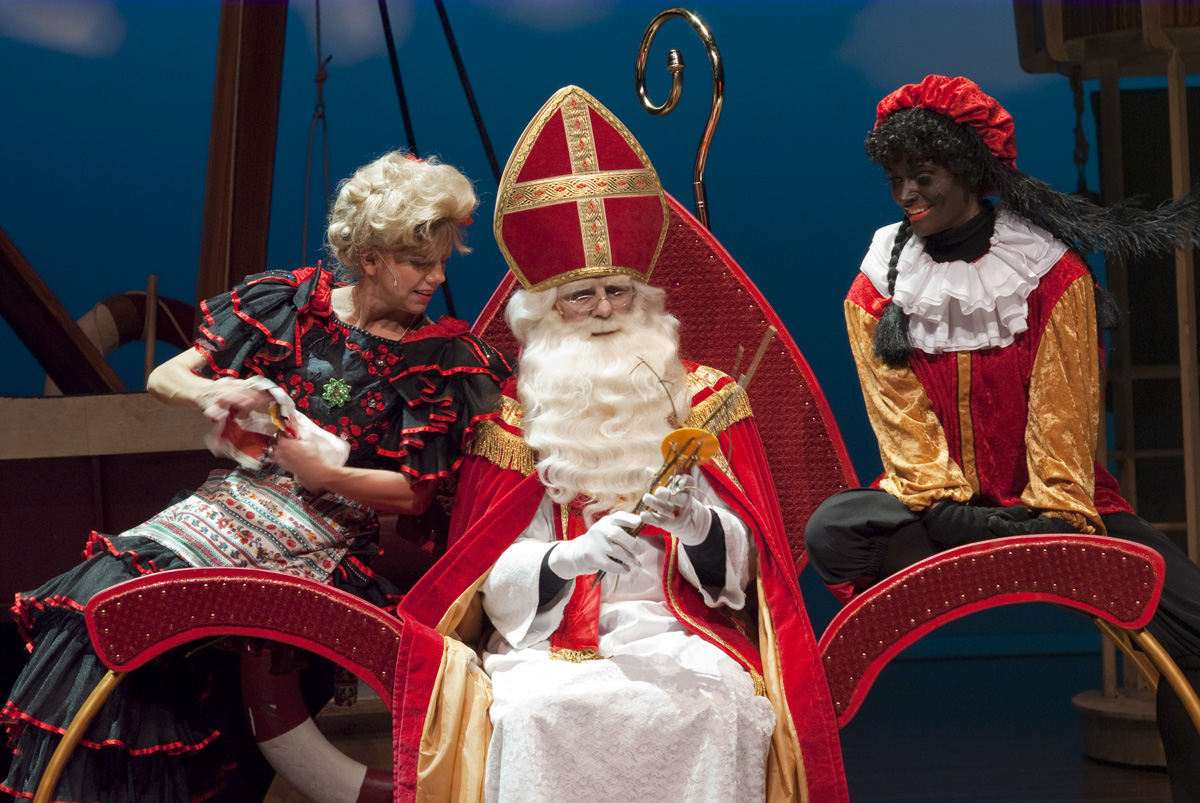
sinterklaas chair
chair design for The PepernotenPieterBand: Wat is er toch met Sinterklaas? A production of RaboTheater Hengelo, premiere nov 20th 2010

Design of the Sinterklaas chair.
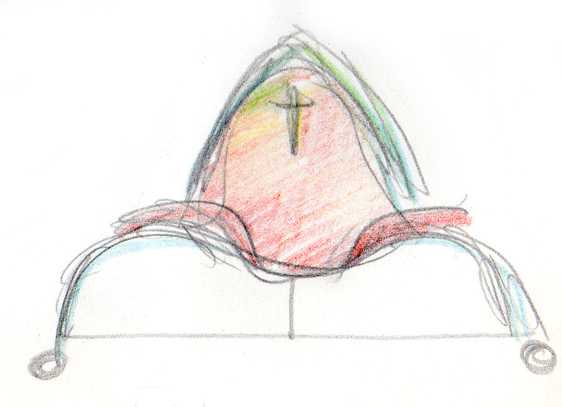
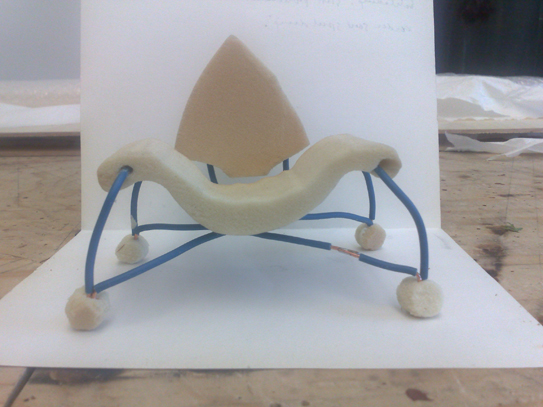
Sketch and first model of a chair for Sinterklaas. It has wheels, and will be upholstered in red. The idea: a lounge-Sinterklaas. However, the icon of Sinterklaas should be respected.
Construction took about five days: making the sketch, model, welding, wood work, painting and upholstery.
For materials: scroll down
Specs: Can carry three persons (250 kg). Can move. A person can hide in the chair.
Nylon (PA) wheels will be used, they roll much better (5x) than the el cheapo rubber wheels. And they are not so expensive as the polyurethane wheels. The only setback is that they will rattle and be noisy on uneven surfaces. But as the chair will be used only in the theater, that will never be the case.
Is the chair strong enough? Instead of overdimensioning it and making it rather heavy SolidWorks was used to make a finite element analysis of the bearing part of the chair. That's rather unusual for theater, but why not? It saves material and trial- and error time and with present fast laptops it's not hard to do. It is not necessary to model the chair completely, which saves time.
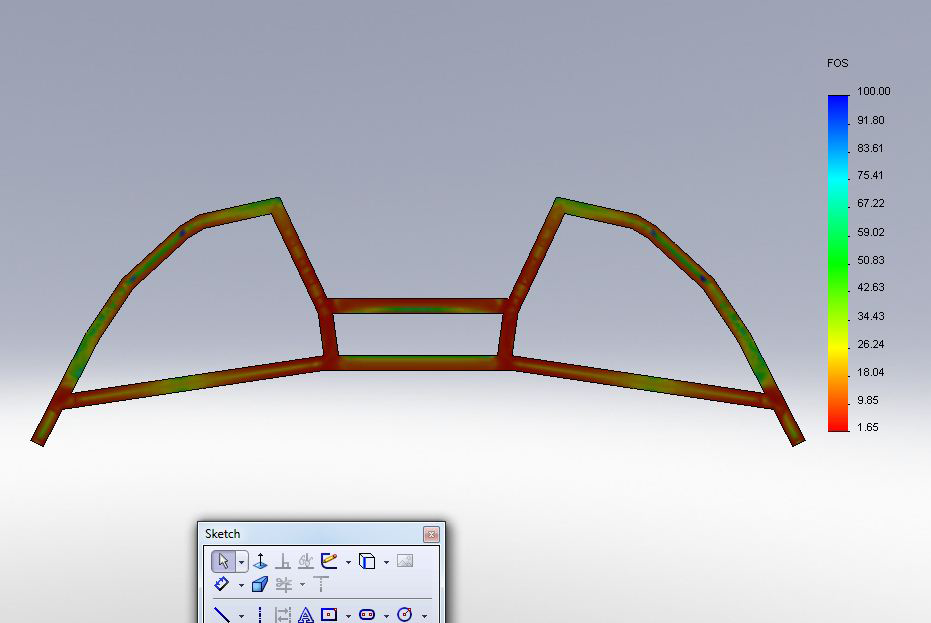
FOS = factor of safety. Calculated with a static load of 2500N in the center of the chair (divided over front and back frame): three persons. The usual beam calculation (bending of the beam, but now statically determined, as a control calculation of the simulation) resulted in more or less the same dimensions and safety.
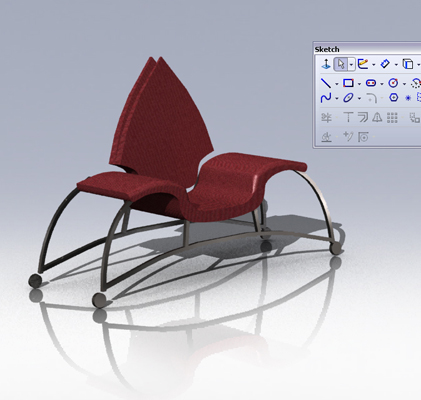
Rendering of the main parts in SolidWorks. Let the welding begin! More modelling is not necessary but during the building some parts will be adapted or bent differently. Often it is even better not to model extensively, as the sculptural and 3D-experience will not be transferred completely on a 2D picture. Experience is needed to know where to stop modelling, as well realizing the goal of the rendering: nice picture for showing off or exploration / confirmation of a 3D model for internal use? Use your time well!
Next steps: welding, attaching wood and seat, back.
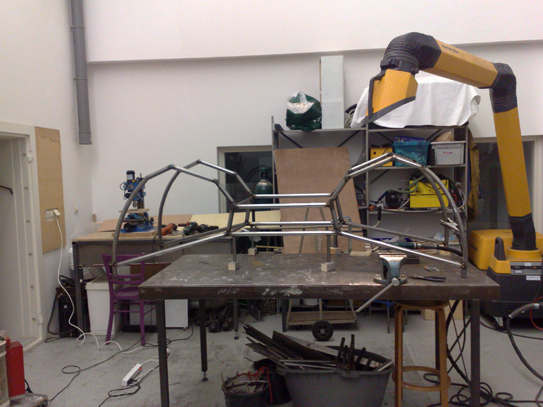
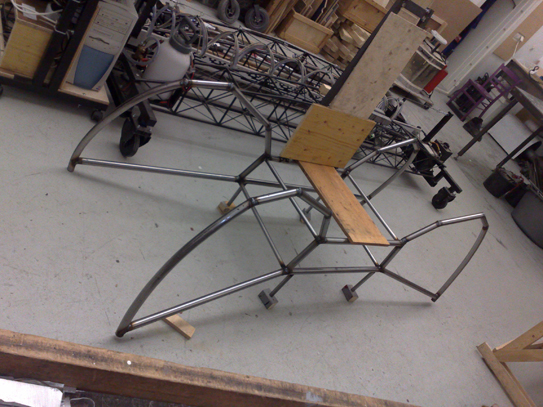
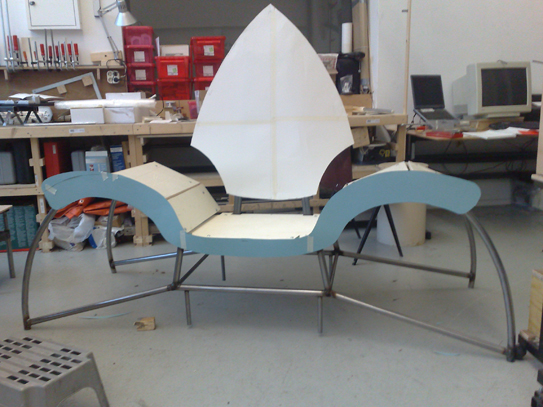
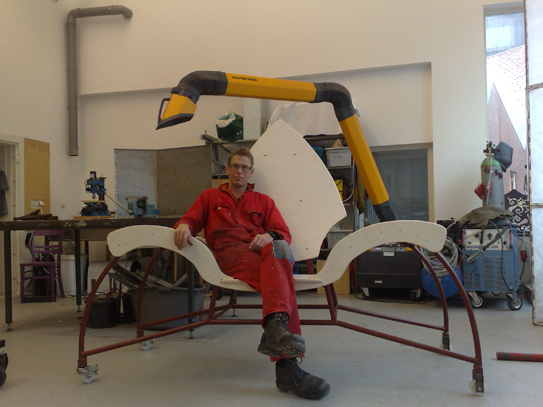
Stick to the plans even when the frame looks weird, like some kind of spider. The upholstery will present a different shape and the paint will also change the association.
Next: to the rehearsal and make the actors run over it, ride it around, turn it, sit, lie, walk on it. Let the director select the proper things for the show.
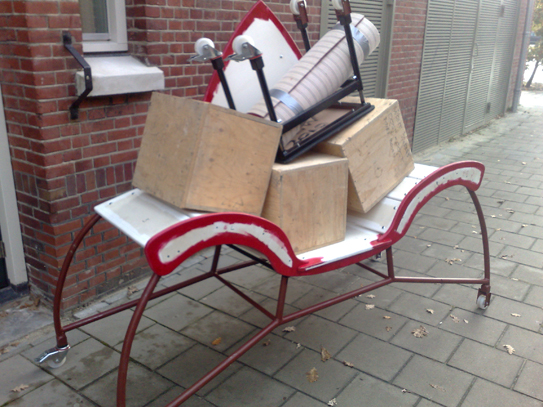
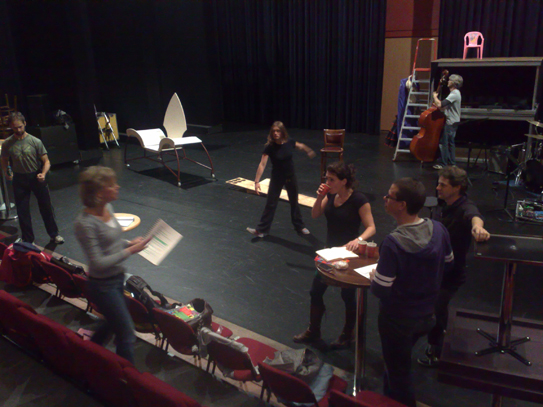
And, as a theater rule, instead of three persons sitting on it now the complete band (six persons, about 400 kg) will stand on it. Typically something to expect. If the chair bends it will have to be straigthened again and a tension cable will have to be added. Major accidents are not expected, so it is not forbidden to stand on it with the band, they were just warned that this may happen and the producer will watch carefully what happens when the chair is overloaded. Misuse is not a problem, accidents would be. As long as that's avoided it's not a big problem when something fails, in a controlled way. This is the base of the risc inventarisation and analysis (RIA) in the theater.
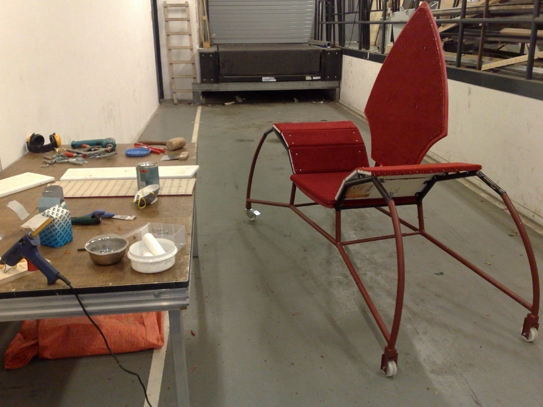
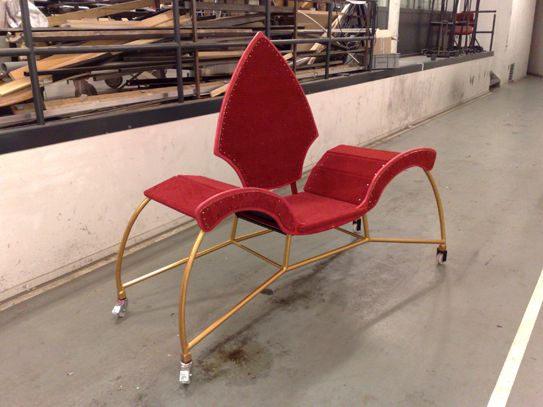
Finishing the chair in the loading dock of the theater.
Because the chair was needed for rehearsals it had to be done in the theater. Usually it's much more efficient to work in the studio: all tools are available, there is enough room and no distraction, the lights can stay on, noise is not a problem nor is the smell of poaint or glue. But if it is necessary working in the theater can be optimised by bringing your own hardware and tools (this saves time when tools have to be looked for or are of bad quality), preparing the work well and telling what you need, how long you will work and how much place you need. Usually this can be arranged. The best place to work is not at the stage itself but in a separate place such as the loading dock, as long as it is not needed for trucks. Make yourself comfortable with a good workbench (for example with a "practicabel") and work tidy, use cardboard or a sheet under your work. This will be appreciated and saves cleaning time as well.
The chair performs well: the actors and director are happy with it and use it for many things. The intent of the chair, to be a play-thing and invoke actions by the players, works well. It is not a chair ment to sit in, but to play with. Instead of soft cushions it has a floor carpet as polstering, much stronger and anti-slip, walking and standing on top is safer this way. The details are not so important as in a chair, because the audience is at least 5 meter away. The chair is very light, which is convenient for acting and for transport.
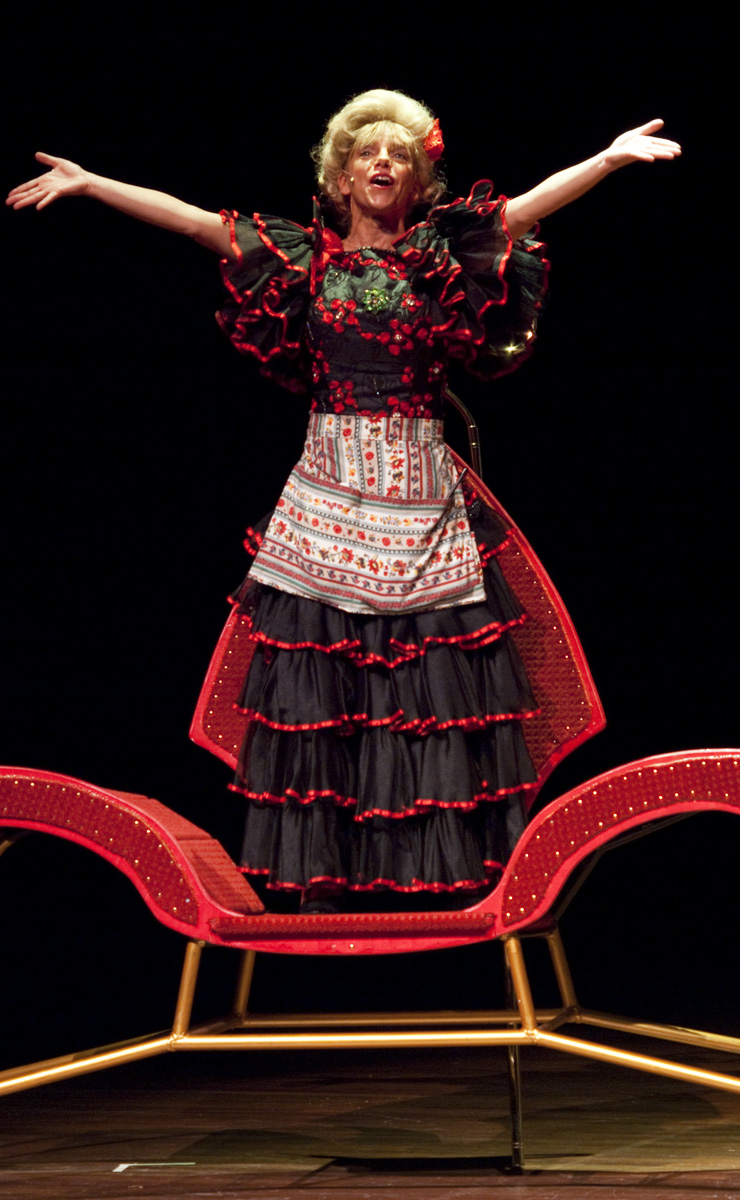
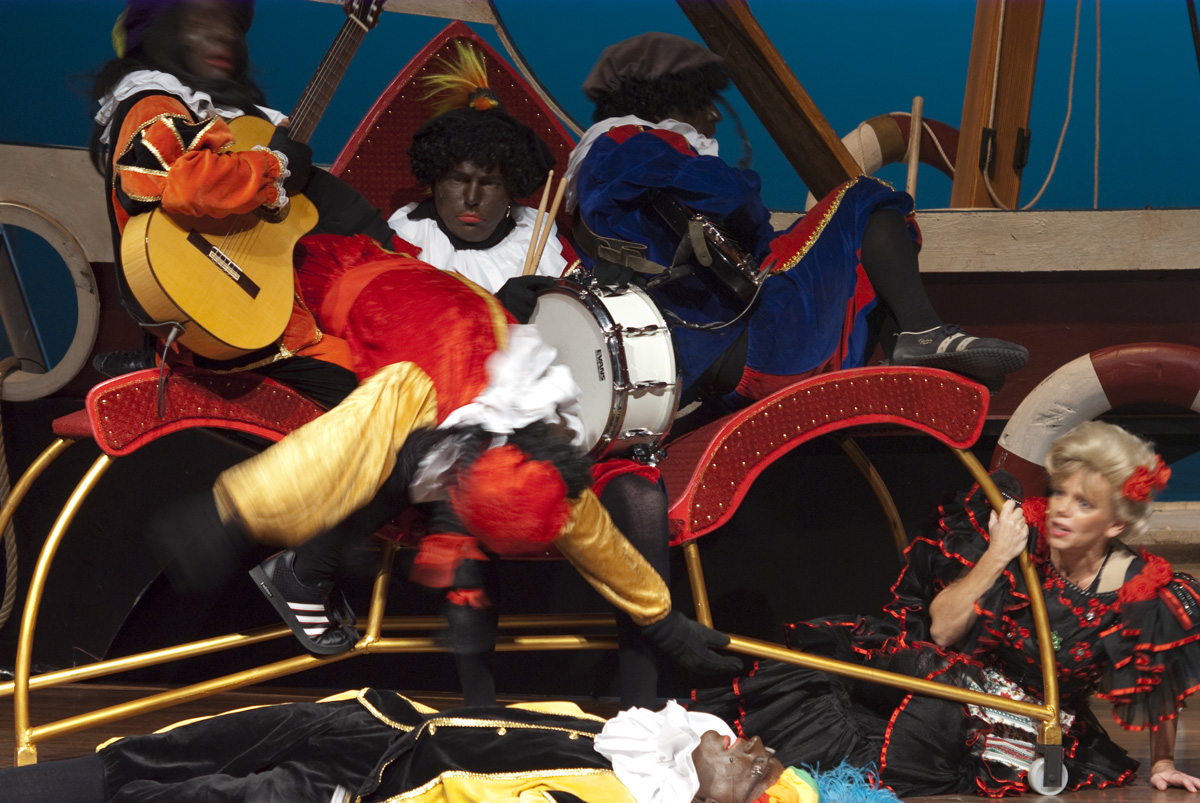
Material used:
steel tube 30mm x 2 mm (Staalmarkt Twente)
steel tube 20 mm x 2 mm
multiplex 18 mm (meubelpaneel interieur, Bouwmaat)
swivel and normal wheel, diam 60 mm, nylon with bearing (Interwiel)
"project tapijt", attached with bisonkit and carpet nails, the edges fixed with hot glue
paint: primer: leadfree primer (loodvrije ijzermenie)
red: Histor alkyd polyurethane "baskisch rood"
gold: acrylic old gold (from Becker Lipperkerkstraat)
black: Tencozwart for the steel parts, Flexa Powerdek zwart for the wood
max load: 250 kg (safety=1.65): 400 kg is the limit, above 400 kg the chair may bend
dimensions: 2.3 m x 0.8 m x 1. 55 m
weight about 30 kg